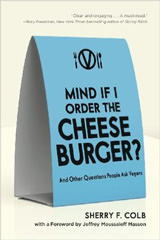Justia columnist and U.C., Davis law professor Vikram David Amar discusses what the legal consequences may be if the sponsors of California’s Proposition 8, the ban on gay marriage, are found by the Supreme Court to lack standing—that is, the legal right—to defend the Proposition. Amar comments on both what should, and what might, happen in that eventuality.
Justia columnist and Cornell law professor Michael Dorf comments on two recent Supreme Court cases that raise complicated and interesting issues regarding class action certification. Dorf explains the holding in each case, and addresses the interesting way in which the substantive merits of the cases and their procedural posture as class actions intertwine.
Justia columnist and U. Washington law professor Anita Ramasastry discusses Instragram’s issue with users’ rating the appearance of young girls in beauty pageants online, and leaving comments both positive and negative. Ramasastry notes that such pageants may raise legal issues and privacy concerns and may trigger issues under COPPA, the Children’s Online Privacy Protection Act.
For the ten-year anniversary of the Supreme Court’s decision in State Farm v. Campbell, Justia columnist and attorney David Kemp provides an overview of the Court’s jurisprudence on the constitutionality of punitive damages in civil lawsuits. He first explains the role of punitive damages in civil lawsuits and then goes on to discuss nine major Supreme Court cases dealing with punitive damages in different manners. He predicts, based on the pattern of punitive damages cases that have come before the Court in years past, that the Court will hear another such case in the not-so-distant future.
Justia columnist and former counsel to the president John Dean comments on recent Republican ploys, such as seeking to disenfranchise those who will likely vote for Democrats. Dean contends that the GOP has forgotten the basics of American democracy, and that its anti-government stance and its attacks on spending are creating new and unnecessary problems, when there are many other problems that we have yet to effectively address. Dean also warns that America only works based on widespread human decency, a tenet that he contends that the Republicans are testing.
Justia columnist and Cardozo law professor Marci Hamilton comments on two recent developments: (1) a new kind of state-level religious freedom restoration act (RFRA) that omits the requirement of a substantial burden upon the plaintiff's religious conduct; a mere burden is enough under this new kind of RFRA; (2) the deeply disappointing nature of the Pennsylvania Task Force Legislative Package to protect children, which omitted child-sex-abuse statute of limitations reform, and failed to protect children from medical neglect by faith-healing parents.
Justia columnist and Cornell law professor Michael Dorf comments on a set of key affirmative action issues that the Supreme Court may address this term and/or the next. The programs at issue include affirmative action in state public higher education, employment, and contracting. As Dorf notes, the Michigan affirmative action case that the Court will address is more complicated than it may at first seem, in part because Court precedents establish limits on how a state or local government may go about eliminating or preventing laws that benefit racial minorities. Dorf also notes that an issue that is important here also crops up in the Prop 8 case currently before the Court: the issue of the import of giving and then taking away rights.
Justia columnist and Hofstra law professor Joanna Grossman comments on two states’ decisions to pass abortion laws despite the fact that under U.S. Supreme Court precedent, it is very clear that these new laws are unconstitutional. Grossman explains the relevant tenets of constitutional law regarding abortion, and details exactly why both North Dakota’s and Arkansas’s laws flout the U.S. Supreme Court’s precedents. Grossman also covers other abortion laws that have been passed by state legislatures despite their very clear unconstitutionality, and notes that the new laws do not gibe with public opinion regarding abortion rights.
Justia columnist and attorney Julie Hilden comments on a recent school speech decision from the U.S. Court of Appeals for the Third Circuit. The case involved a fifth grader who had sought to invite her classmates to her church's Christmas party. The court invoked the Tinker test, which asks whether student speech causes substantial disruption in the school's setting. The case also raised the intriguing question of how old students need to be to have their speech in the school setting protected by the Tinker precedent.
Justia columnist and U.C., Davis law professor Vikram David Amar comments on the standing issues, as well as some other issues, that were discussed by the U.S. Supreme Court’s Justices in their recent oral argument regarding Proposition 8, the California measure that bans same-sex marriage. In particular, Amar discusses whether the proposition’s sponsors are the ones who should defend it in court, concluding that they are not. He adds, as well, that denying the sponsors standing will not weaken the initiative device. Moreover, Amar notes that state law could authorize sponsors to defend initiatives in the future, but the authorization must be done carefully, clearly, and in a way that is visible to voters. Amar also considers the possibility that the Proposition 8 case will ultimately be dismissed by the Supreme Court as having been improvidently granted.
Justia columnist, George Washington law professor, and economist Neil Buchanan takes aim at the popular belief that governments’ budgets should be balanced. Noting that corporations do not have balanced budgets and typically thrive as they take on debt, Buchanan asks why governments should be any different. Borrowing, in both good times and bad, Buchanan contends, is the right thing to do—contrary to Republicans like Paul Ryan’s recent claims. Indeed, Republicans’ arguments in favor of budgetary austerity amount to nothing more than excuses to redistribute income upward, Buchanan contends. He also notes that misunderstandings about the role and significance of government debt are often fostered by the press.
In Part Two of a two-part series of columns on the Supreme Court case of Maryland v. King, Justia columnist and Cornell law professor Sherry Colb continues her analysis of the case, which raises questions about the Fourth Amendment significance of DNA collection from arrestees, in light of the government interests and privacy entitlements that are at stake when a person is taken into custody. Part One of this series appeared on March 20, here on Justia’s Verdict.
Justia columnist and U. Washington law professor Anita Ramasastry comments on the regulation of virtual currencies, such as Bitcoins, that are created by private companies, and that can be used for either legal and illegal transactions, due to their ability to afford anonymity to users. Ramasastry also covers the new rules that the US Treasury will apply to such currencies; and why the rules’ guidance currently may not be sufficient to guide administrators or exchanges of new virtual currencies in a way that will provide law enforcement with the leads they need to tackle virtual money laundering.
Justia columnist and attorney David Kemp discusses a judge’s recent ruling that permitted the Federal Trade Commission to issue service of process on foreign defendants via email and Facebook. Kemp summarizes the facts of the case and the judge’s reasoning and provides a brief overview of the requirements of service of process. He argues that the ruling, while ostensibly narrow, may have broader implications for the use of Facebook in serving foreign defendants.
Justia columnist and former counsel to the president John Dean comments on Senator Ted Cruz, who has made news lately. Deeming Cruz an authoritarian conservative, Dean discusses Cruz’s recent clash with fellow Senator Dianne Feinstein, and Cruz’s background and views. Dean also argues that while some call Cruz a wacko, he is better described as a troll; and explains why even some conservative commentators are finding Cruz to be going beyond their limits.
Justia columnist, George Washington law professor, and economist Neil Buchanan comments on a number of striking post-election policy changes from Republicans, on issues ranging from gay rights, to immigration, to reproductive choice. Buchanan argues that the key issue that Republicans won’t bend on now is, unfortunately, the crucial issue of helping people in need—a category of persons that does not just encompass the needy, but other groups like today and tomorrow’s children and retirees as well.
In Part One in a two-part series of columns relating to the pending Supreme Court case Maryland v. King, Justia columnist and Cornell law professor Sherry Colb considers the Fourth Amendment significance of DNA collection from arrestees, in light of the government interests and privacy entitlements that are at stake when a person is taken into custody. Part Two of this series will appear next Wednesday, March 27.
Justia columnist and attorney Julie Hilden comments on Hawaii’s Steven Tyler Act, which seeks to attract more celebrities to Hawaii by addressing the paparazzi problem for those celebrities who may want to vacation there—or have a house there, as well-known musician Steven Tyler does. Hilden contends that the Act raises two key First Amendment issues—one regarding failed attempts to photograph celebrities, and another regarding how much consideration should have to be exchanged to trigger a violation of the statute.
Attorneys David O. Klein and Jonathan B. Turco comment on the law regarding sweepstakes, and the risks of failing to abide by that law, which could entail very significant liability. Klein and Turco note key distinctions in this area of law, such as the distinction between games of chance and games of skill, discuss how to remove the element of consideration from a game, and cover some additional sweepstakes complexities. Finally, they make clear the difference between sweepstakes and Internet sweepstakes cafes, which are simply a set of casino-style games.
Justia columnist Joanna Grossman and Justia guest columnist Leon Friedman, both Hofstra law professors, comment on the landmark Supreme Court case of Gideon v. Wainright, which established the right to an attorney for those who are facing felony charges, and who would not otherwise be able to afford a lawyer. The column is timely, as the Gideon precedent is now fifty years old. In their column, Grossman and Friedman describe the state of the law before the ruling in Gideon, note the arguments that persuaded the Court to declare a right of appointed counsel for those who could not afford counsel, and explain the meaning of the ruling.












































